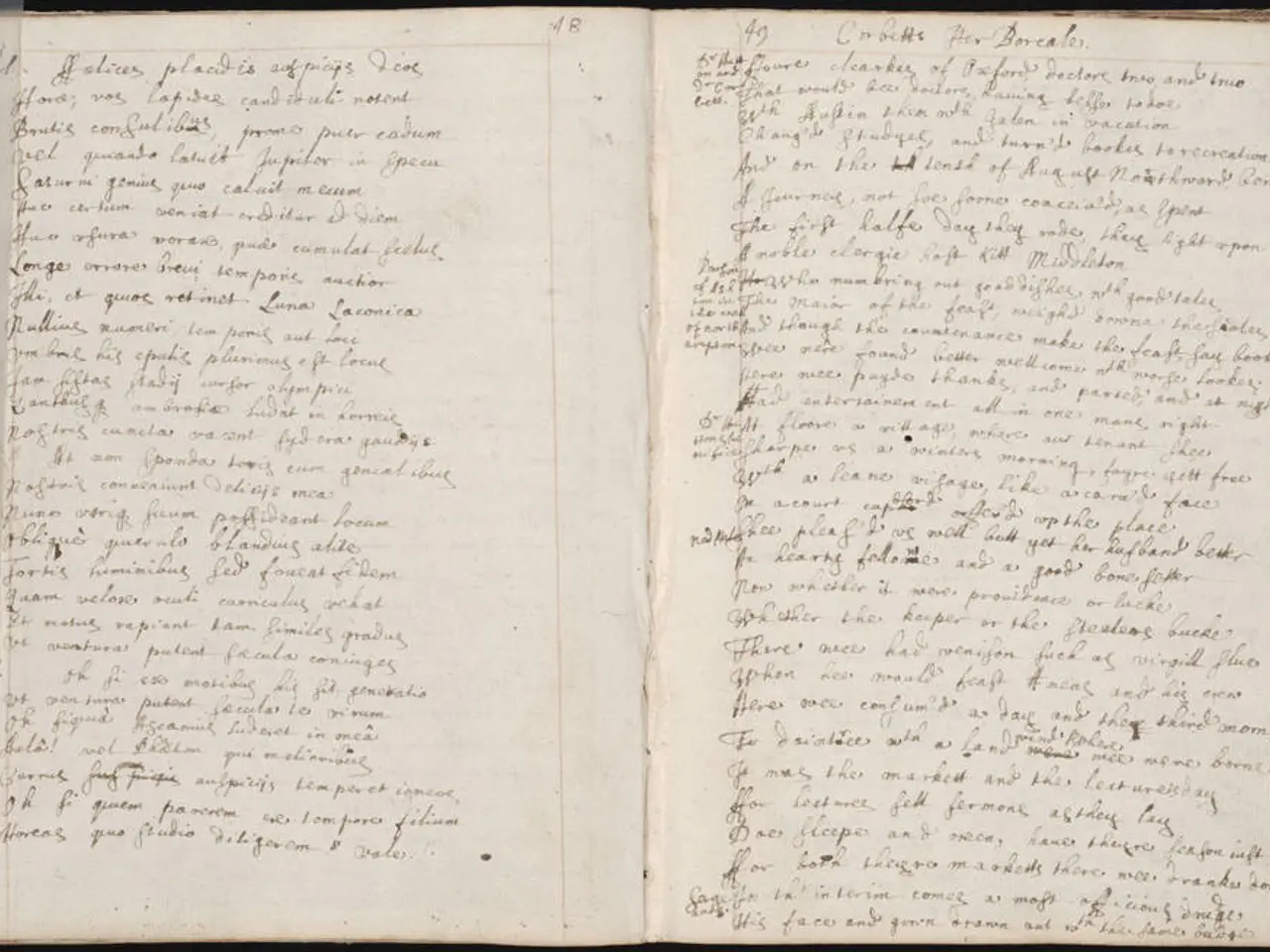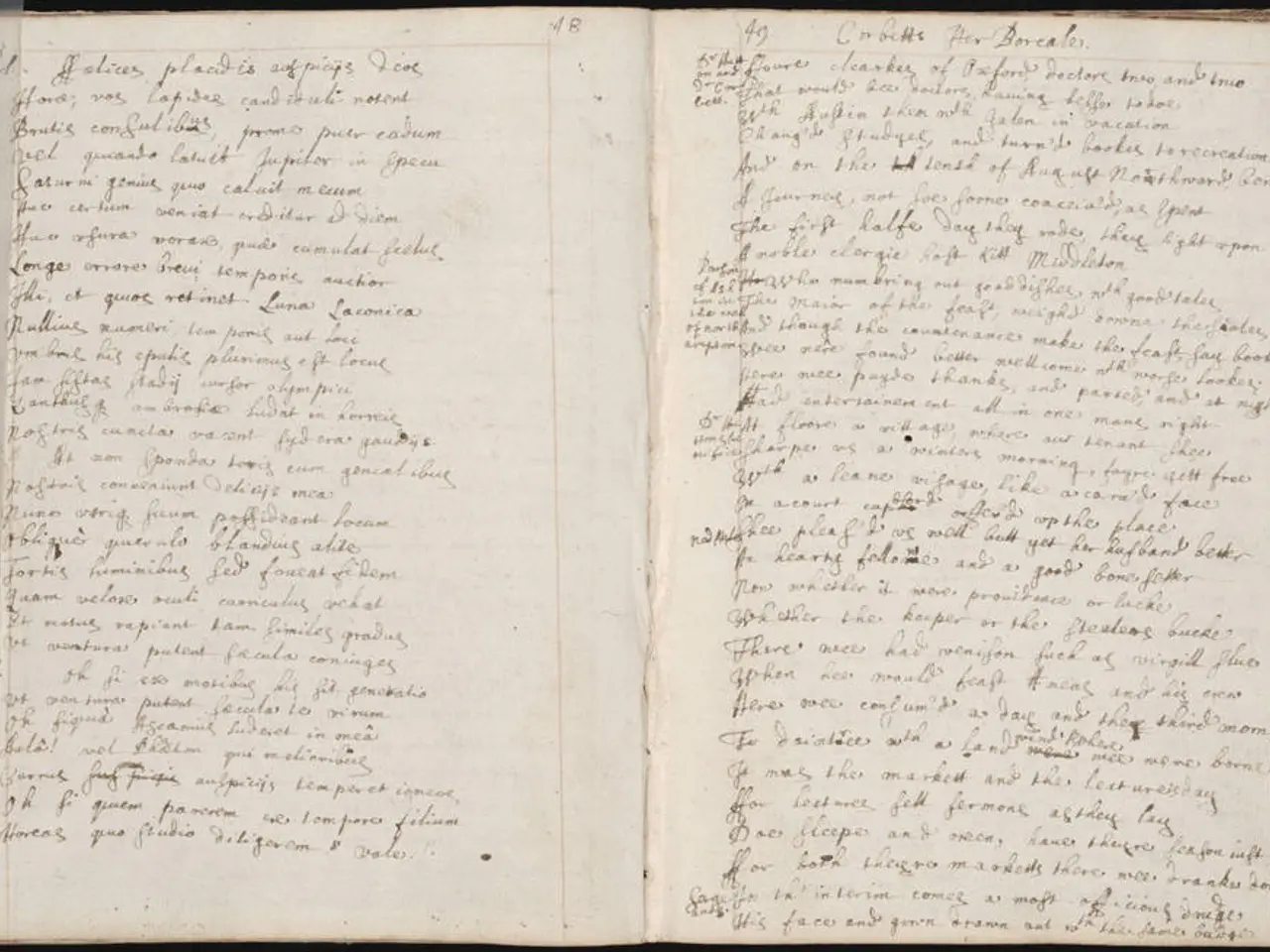Mastering Harmonious Composition: Exploring Chord Progressions, Recurring Themes, and Additional Techniques
In the realm of music production, understanding and effectively using chord tones and non-chord tones in melody writing is crucial. These elements form the backbone of any melodic line, providing both harmony and interest.
Chord tones, as the name suggests, are the notes that make up the underlying chord at a given moment. By focusing on these tones, your melody will sound stable and harmonically consonant with the harmony, as these notes belong naturally within the chord. For instance, if your chord is C major (C, E, G), using melody notes primarily from these tones will anchor the melody harmonically.
Emphasising chord tones on strong beats or important rhythmic moments communicates the harmonic foundation clearly to the listener, reinforcing the key and structure of the song. This approach creates a sense of resolution and stability in your melody, which listeners find satisfying.
Non-chord tones, on the other hand, are notes that are not part of the current chord but can add melodic interest, tension, and colour. Types of non-chord tones include passing tones, neighbour tones, escape tones, and suspensions.
Passing tones are used to smoothly connect two chord tones by stepwise motion, often creating a sense of linear flow. Using a note between two chord tones—even if it's not in the chord—can add melodic movement and make the line more interesting, as long as it's resolved properly.
Escape tones typically move away from a chord tone by step and resolve by a leap, contrasting with passing tones and adding expressive flavour.
Non-chord tones are often placed on weaker beats or lighter rhythmic positions to avoid sounding dissonant or jarring.
When it comes to practical application, starting your melodic phrases by targeting chord tones on strong beats establishes harmonic clarity. Inserting non-chord tones on off-beats or weaker parts of the measure creates tension and release, adding emotional and musical interest. Experimenting with passing notes when transitioning between chords can make your melodies feel smoother and more connected without clashing with the harmony.
Understanding the context and function of chords in your progression is also important. Some chords act as subdominants or dominants, and the choice of chord and non-chord tones can reflect these functions, adding depth to your melody.
Being mindful of your tonal center and modal context is also essential. Switching tonal centers or modes shifts perception of chord and non-chord tones, affecting the overall mood.
In essence, effectively combining chord tones and non-chord tones means balancing stability with tension. Chord tones provide the harmonic anchor, while non-chord tones introduce movement and expressiveness. Use chord tones to ground your melody and non-chord tones tastefully—often as passing or escape tones—to enrich melodic lines without losing harmonic cohesion. Experimentation is encouraged; if it sounds musical and intentional, it's effective in music production.
This approach will help you craft melodies that feel both harmonically sound and creatively engaging. Whether you're trying to fix a bad melody or create a catchy hook, breaking it down using the techniques discussed above and focusing on implementing the techniques can greatly improve your melody. The type of motion that melodies should favour will ultimately depend on the style and genre of the music being produced.
The guide also discusses the importance of the relationship between a melody and its chords, the difference between chord tones and non-chord tones, and provides examples of melodies from popular tracks to illustrate these concepts. Deliberate practice is the fastest way to turn your passion for music into a sustainable career.
In this quest for musical melody creation, venturing into the realm of education-and-self-development, particularly books on music theory, can yield fruitful insights. For instance, delving into books on music theory may introduce you to the different ways of employing chord tones and non-chord tones in melody writing, just as we've discussed on the stable foundation of chords and their roles in providing harmony and melodic interest.
Furthermore, you might discover additional strategies for combining chord tones and non-chord tones effectively, such as manipulating their usage to balance stability with tension, thus creating melodies that are both harmonically sound and creatively engaging. This knowledge empowered by reading these educational books can serve as a supportive tool in your pursuit of growth as a music producer.




